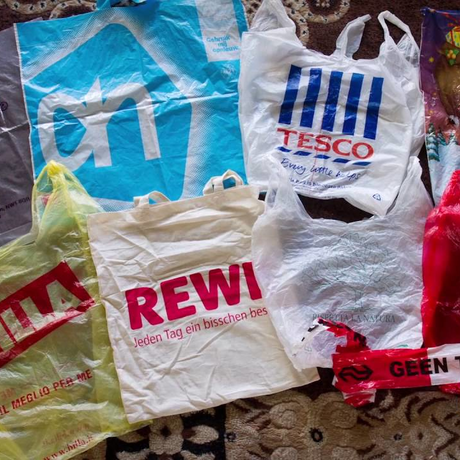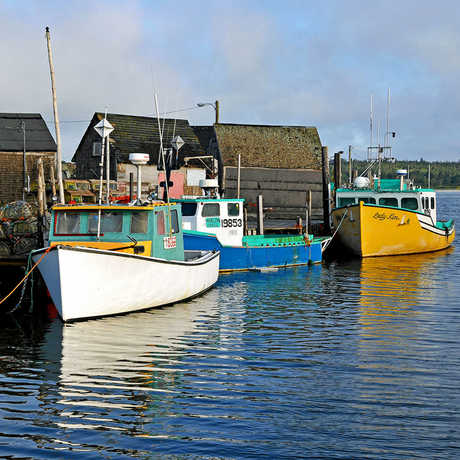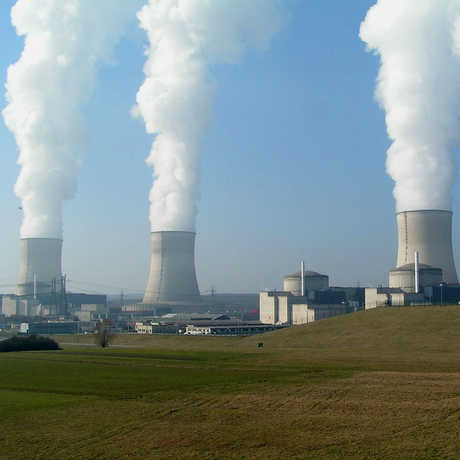
"Oiled Kemps Ridley Sea Turtle" © 2013 NOAA
Spill it and clean it! Students will observe the effects of a simulated oil spill on land, water, and wildlife. In groups, students will then test different materials and tools used to clean up oil spills and evaluate them for their effectiveness.
Students will:
- evaluate tools for their effectiveness in solving a problem.
- compare advantages and disadvantages of multiple solutions to a set problem.
- learn some of the reasons why oil spills are so disastrous.
- Large plastic tubs (1 per team of 4 or 5 students)
- Water- enough to fill each tub with a couple of inches of water
- Small cups (1 per team of 4 or 5 students)
- Dark olive oil – 3-4 tablespoons in each small cup
- Teacher tip: the darker it is, the easier it will be to see in the tub
- Habitat items for each group:
- rocks (some large and some small)
- sticks
- feathers
- moss or pieces of lettuce
- pieces of faux fur or furry fabric
- Cleaning tools for each group:
- 12” pieces of string
- sponges
- cotton balls
- spoons
- dish detergent
- optional: eyedroppers
- Paper towels – 1 for each student plus extras (to wipe their hands)
- Oil Spill worksheets (1 per student)
- Set up oil spill stations, one for every 4 or 5 students containing:
- Tub filled with 2-3 inches of water
- A few large rocks for an island
- Set of habitat items
- Set of cleaning tools
- Cup of 3-4 tablespoons of oil
- 1 paper towel for each student
- Print out one worksheet per student.
- fossil fuel: An energy-rich substance formed from the remains of organisms such as petroleum, coal, or natural gas
- nonrenewable resource: a resource that is not replaceable after its use such as oil or coal
- petroleum: naturally occurring mixture of gaseous, liquid, and solid hydrocarbons derived from remains of fossil plants and animals, especially in shallow marine environments, and separated into products such as gasoline, paraffin wax, asphalt, and many others
- renewable resource: a resource that is never used up or a resource that can be replaced such as solar power
Discuss with the students:
- What is petroleum? What products are made from petroleum?
- List some of the products of petroleum such as gasoline and plastics. (See Educator Background for a list)
- List some of the products of petroleum such as gasoline and plastics. (See Educator Background for a list)
- How is petroleum collected, processed and distributed for use? What is the biggest danger of the distribution of oil? Teacher tip: show students a picture of an oil tanker. Most people who live or have visited a port city have seen one, even if they didn’t know what it was.
- What is an oil spill? What are some ways the environment is affected by an oil spill?
- Essential question: What are the effects of both the spill and the cleanup? What can we, as humans, do to avoid these problems in the future?
- Introduce the activity. Students will create a model habitat, complete with living organisms, which will suffer an oil spill. They will then test different tools to try to clean their habitat as best as possible.
- Divide students into groups of 4 or 5 and direct them to an oil cleanup station.
- First, students need to create their habitats.
- They will use the rocks to form an island that rises out of the water in the tub.
- Next, add “plants” (sticks and lettuce or moss) and “animals” (feathers and fake fur). Some can be on the land, but most should be in the water.
- Teacher tip: make sure students are taking turns building the island so everyone participates!
- Each group will then pour the oil into the tub, spreading over the island, water and habitat items.
- Observe and discuss: How is each material reacting with the oil? Have students record their observations on their worksheet.
- One at a time, use each cleaning tool to remove, or barricade, oil from the rocks, water and habitat items.
- Make notes about how each tool works on your worksheet.
- After testing each tool, discuss your observations about the tool as a group.
Discuss findings as a class:
- What happened to the land and habitat items when the oil spilled?
- How did your group use the different tools? Why?
- Which tools worked best for cleanup? Why?
- What was the hardest material in your habitat to get the oil off of? Why do you think this is?
It is hard to separate oil and water, so clean up processes can take a long time and a lot of effort. Oil sticks to fur and feathers and is hard to remove, which is why animals are affected during oil spills. The string can contain the oil to an area, but cannot clean it up.Different materials absorb the oil at different rates.
- What does this tell us about real world oil spills? What are some other ways we could clean up oil spills?
- Is there anything else we can do to minimize the impact of oil spills?
It is unrealistic to altogether stop using petroleum, but we can reduce usage, use safer transport methods, and engineer ways to more effectively clean oil spills. There are also some newer ideas being studied to clean up oil spills.
- Now that students have some familiarity with the cleaning materials, repeat the experiment. This time, give students a chance to pre-plan the best way to clean up the spill so they can test their solutions. Allow students to research ways oil spills are professionally cleaned and, if desired, bring in or make other objects to test them out.
- For a comprehensive unit on fossil fuels, combine this lesson with Fossil Fuels: Chocolate Chip Mining or Fossil Fuels: Air Pollution and the Greenhouse Effect.
The distribution of energy resources such as petroleum can have negative environmental consequences. Distribution occurs both before refinement (such as raw ore or crude oil) and after conversion (such as fuel oil.) For example, oil is transported to refineries, where it is converted to gasoline and other substances, which are then distributed as well.
Petroleum
Petroleum is vital to our society because of its role as an energy fuel. There are many advantages of petroleum such as (Conserve Energy Future, n.d.):
- Produces a large amount of energy: petroleum burns easily and has a high calorific value, meaning it produces a lot of energy per its weight.
- Easily and abundantly available: petroleum is easier to access than other fossil fuels and requires less physical effort and unsafe practices to extract.
- Byproducts are also needed. Not only is it used for energy, the byproducts are used for many products from cosmetics to plastics. Go to http://www.ranken-energy.com/Products%20from%20Petroleum.htm (Ranken Energy, 2014) for a partial list.
Oil Spills
Oil spills occur when a liquid petroleum is released into the environment, and is most common in marine areas. Most oil spills are very small – we never even hear about them. Large oil spills occur much less frequently, but can be absolutely destructive to the ecosystems in several ways.
The main source of damage is the oil itself, as it covers the surface of water and nearby land (National Oceanic and Atmospheric Association, 2014). Spilled oil coats everything including birds’ feathers, grains of sand, tree roots, and more. For birds, the oil on their feathers can prevent them from flying and can disrupt their natural waterproofing and insulation which regulates their temperature (West, 2014). Cetaceans (whales and dolphins) covered in oil may have trouble breathing as their blowholes are covered or oil seeps into their lungs (New England Aquarium, 2014). Ingestion and absorption of oil sickens both plants and animals in the area. After a spill, some of the oil eventually begins to sink into the deeper water. This damages underwater ecosystems and contaminates the fish and smaller organisms that are essential links in the global food chain (West, 2014).
The cleanup operations can also cause damage to ecosystems (National Oceanic and Atmospheric Association, 2014). Containment and cleanup methods can remove water, plant life, and sand from shores near the spill. Chemicals used to break down the oil can have harmful effects on wildlife and the health of response teams.
Finally, the disposal of oil collected during cleanup activities has lasting effects on the environment. The oil must be reused or disposed of properly, using such methods as incineration or burying in a landfill (Environmental Protection Agency, 2014).
Oil Spill Response Techniques
Cleaning up oil spills is complicated because no two spills are alike. The type of oil (whether crude or refined), type of water, and environmental conditions affect tools and procedures for cleanup (Smithsonian Ocean Portal, 2014). Cleanup teams respond to spills using one or more of the following methods:
- Containment: Floating barriers, called booms, as well as natural and synthetic absorbing materials are used to prevent the spreading of oil during spills.
- Chemicals: Some chemicals make the oil more solid and are useful in helping to keep oil from reaching shorelines and other sensitive habitats. Some chemicals break up the oil into smaller particles which mix with water more easily (Environmental Protection Agency, 2014).
- Physical methods: Boats skim the sea surface removing oil from the water. On land, wiping with sorbent materials, pressure washing, and raking and bulldozing can be used to assist the natural process of oil absorption (Environmental Protection Agency, 2014).
Notable Oil Spills
The Deepwater Horizon oil spill is considered the worst oil spill in U.S. history. In April 2010, The Deepwater Horizon oil rig exploded and sunk in the Gulf of Mexico. A pipe from the rig was leaking oil and gas on the ocean floor off the coast of Louisiana. By the time the well was capped on July 15, 2010 (87 days later), an estimated 4.9 million barrels (over 200 gallons) of oil had leaked into the Gulf (Smithsonian Ocean Portal, 2014). As the oil left the well, it spread throughout the water. Some floated to the ocean's surface to form oil slicks. As much as 20 percent of the spilled oil sank to the sea floor. This can damage sea corals and deep water ecosystems (Smithsonian Ocean Portal, 2014).
In November 2007, a container ship hit the San Francisco-Oakland Bay Bridge and spilled 58,000 gallons of oil, resulting in beach closures and dead and injured wildlife including seabirds and fish. Scientists said it could affect the wildlife for years to come (Chea, 2007).
Science and Engineering Practices
- Planning and Carrying out Investigations:
- Plan and conduct an investigation collaboratively to produce data to serve as the basis for evidence.
- Collect data about the performance of a proposed object, tool, process, or system under a range of conditions.
- Constructing Explanations and Designing Solutions:
- Apply scientific ideas or principles to test a design of an object, tool, process or system.
- Generate and compare multiple solutions to a problem based on how well they meet the criteria and constraints of the design solution.
- Developing and Using Models: Develop and use models to describe phenomena.
Disciplinary Core Ideas
- 4-ESS3.A: Natural Resources: Energy and fuels that humans use are derived from natural sources and their use affects the environment in multiple ways.
- 3-5-ETS1.B: Developing Possible Solutions: Tests are often designed to identify failure points or difficulties, which suggest the elements of a design that need to be improved.
- 3-5-ETS1.C: Optimizing the Design Solution: Different solutions need to be tested in order to determine which of them best solves the problem, given the criteria and the constraints.
- ESS3.C Human Impacts on Earth Systems: Human activities in industry have had major effects on the land, vegetation, streams, ocean, air and even outer space.
- MS-ETS1B: Developing Possible Solutions: Models of all kinds are important for testing solutions.
Cross-Cutting Concepts
- Cause and Effect: Cause and effect relationships may be used to predict phenomena in natural or designed systems.
- Systems and System Models: Models can be used to represent systems and their interactions - such as inputs, processes, and outputs – and energy, matter, and information flows within systems.
- Stability and Change: Stability might be disturbed either by sudden events or gradual changes that accumulate over time.
Related Performance Expectations
- 4-ESS3-1: Obtain and combine information to describe that energy and fuels are derived from natural resources and their uses affect the environment.
- 3-5ETS1-3: Plan and carry out fair tests in which variables are controlled and failure points are considered to identify aspects of a model or prototype that can be improved.
- MS-ESS3-3: Apply scientific principles to design a method for monitoring and minimizing a human impact on the environment.
- MS-ETS1-4: Develop a model to generate data for iterative testing and modification of a proposed object, tool, or process such that an optimal design can be achieved.
A partial list of products made from Petroleum (144 of 6000 items) (n.d.) Retrieved on December 2, 2015.
Chea, T. (2007, November 9). San Francisco Oil Spill Threatens Wildlife. National Geographic News. Retrieved June 18, 2008.
Gulf Oil Spill (n.d.) Retrieved on November 25, 2014, from Smithsonian Ocean Portal.
Gulf Oil Spill: Effects on Wildlife and Habitats (n.d.) Retrieved on November 25, 2014 from New England Aquarium.
How Oil Harms Animals and Plants in Marine Environments (n.d.) Retrieved on November 25, 2014 from National Oceanic and Atmospheric Association.
Levitt, Tom (2012, September 21). Cleaning up oil spills with magnets and nanotechnology. CNN Tech. Retrieved December 2014.
Oil Spill Response Techniques (n.d.) Retrieved on November 25, 2014, from Environmental Protection Agency.
Spill Containment Methods (n.d.) Retrieved on November 25, 2014 from National Oceanic and Atmospheric Association.
West, L (n.d.) How Do Oil Spills Damage the Environment? Retrieved on November 25, 2014.
Advantages of Fossil Fuels. (n.d.) Retrieved on May 14, 2015 from Conserve Energy Future.
Image: "Oiled Kemps Ridley Sea Turtle" by National Oceanic and Atmospheric Administration, originally sourced from https://staging-drupal.noaa.gov/resource-collections/gulf-oil-spill


